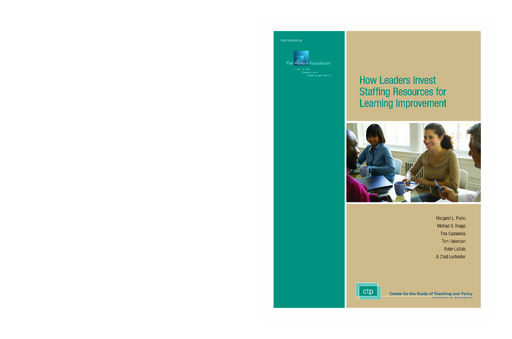- Author(s)
- Margaret L. Plecki, Michael S. Knapp, Tino Castaneda, Tom Halverson, Robin LaSota, and Chad Lochmiller
- Publisher(s)
- Center for the Study of Teaching and Policy at the University of Washington
Research Approach
Study and design sample
To explore the investment of staffing resources in pursuit of a learning improvement agenda, the study concentrated on four urban districts and 14 schools that vary in size, demographics, and educational governance and finance systems. A “nested” research design allowed the researchers to examine interactions among state, district, and school levels. The time period of the study was the 2006–07 and the 2007–08 school years. In this report, the researchers provide information and analyses related to three questions:
- What challenges prompt or guide educational leaders to alter how they invest staffing resources inside districts and schools? What frameworks do district leaders construct to guide these resource decisions, in relation to a learning improvement agenda?
- What specific strategies do leaders pursue to bring staffing resource investments to bear more directly on improved, equitable learning outcomes for all students?
- How do principals and district leaders establish and sustain support for efforts to differentially invest staffing resources to equitably meet the learning needs of all students?
Data sources and data collection strategy
To investigate these questions, research team members conducted site visits to each of the 14 school sites at least four times over the course of the two-year study. School principals were interviewed at each site visit along with other staff exercising leadership within the school (formal and informal), as well as a representative sample of teachers.
In addition, researchers observed a wide variety of school-based activities, including classroom instruction, staff and community meetings, and other leadership events (e.g., coaching work). The research team conducted a minimum of five site visits at the district level, including interviews with the superintendent, other district-level leaders, school board members, and business and community leaders. Research team members also observed a host of other activities, including leadership training sessions, budget meetings, school board meetings, and community events, and had access to some of the district’s personnel and fiscal databases.


